Indochina, Personalities, Michel Nr. 313-315; Three stamps with nominals of 6C, 20C and 30C were issued in perforation 11.5. The stamps were issued at different times as follows:
6C = October 5th, 1943
20C = June 10th, 1943
30C = June 15th, 1943
Here is the mint set in blocks of four.
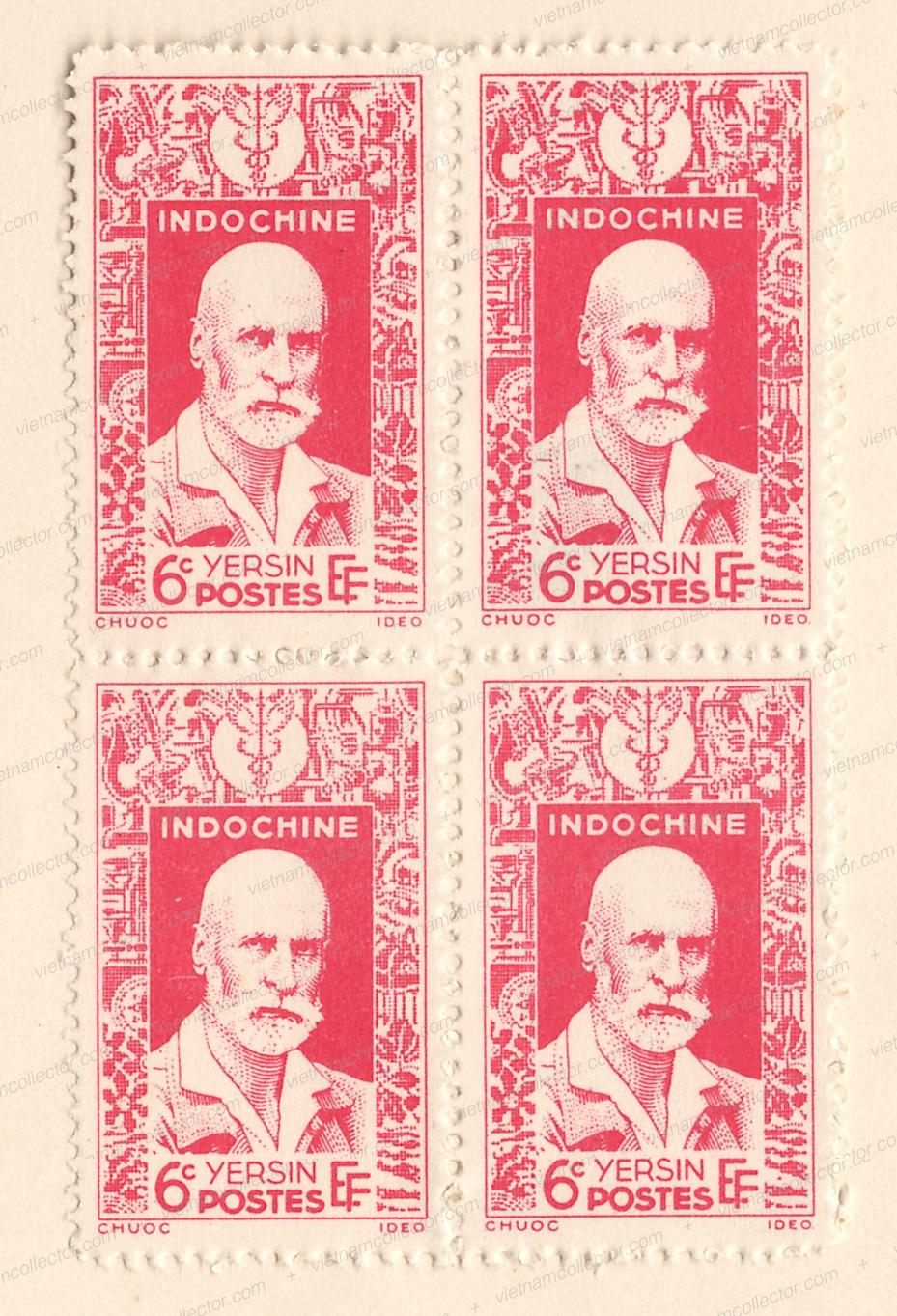

Yellow-brown color
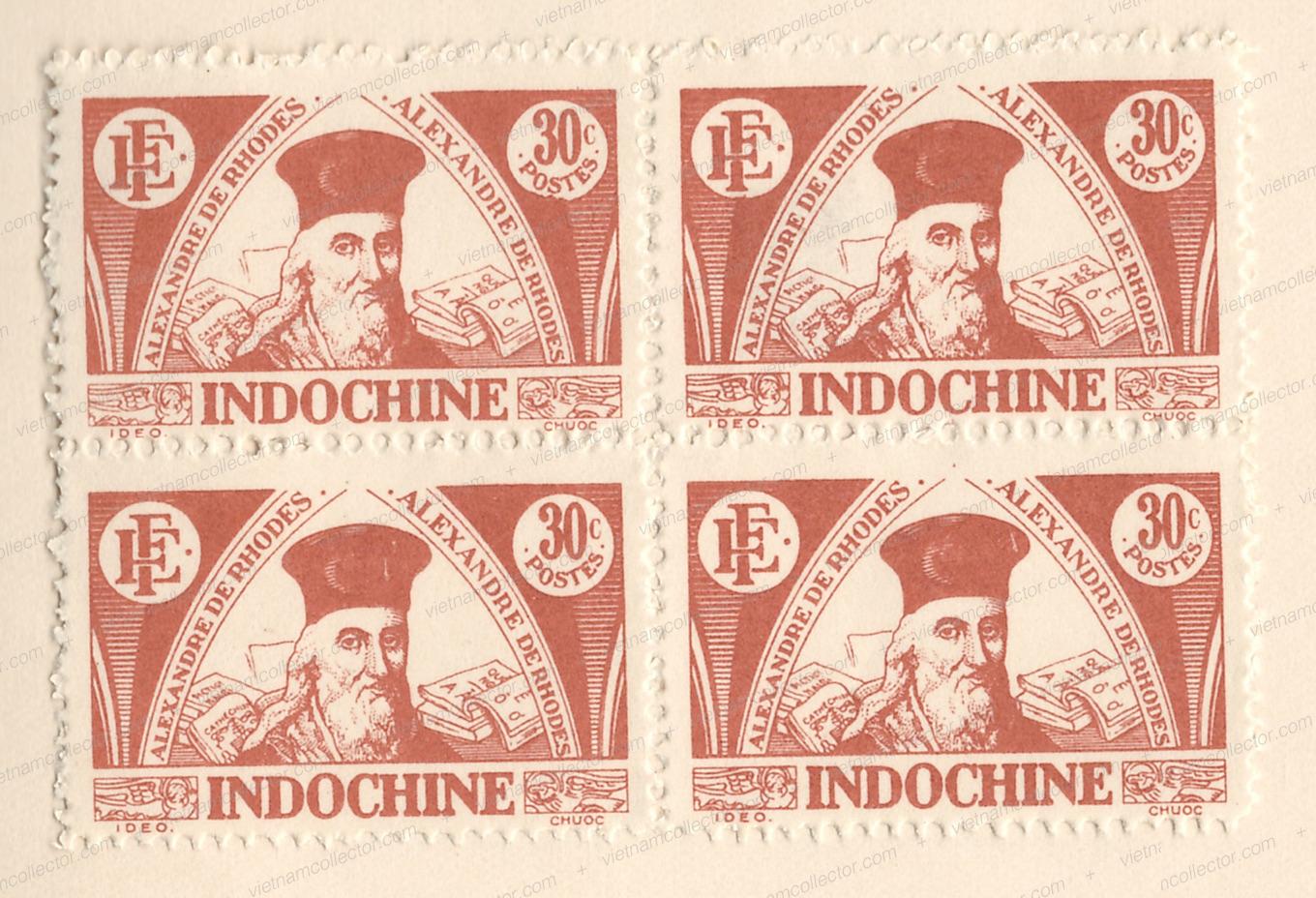
The 30C stamp has some perforation varieties. Below are mint blocks of four in:
13.5 x 13.5
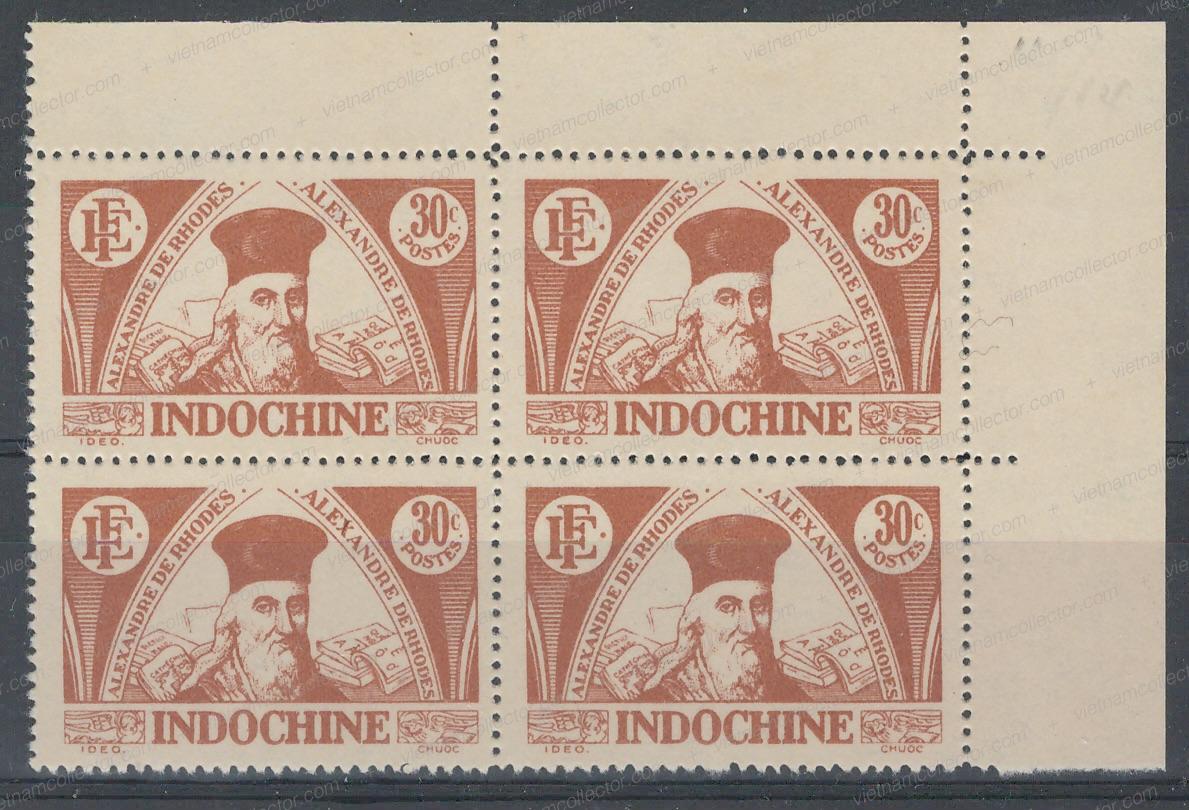
12:12
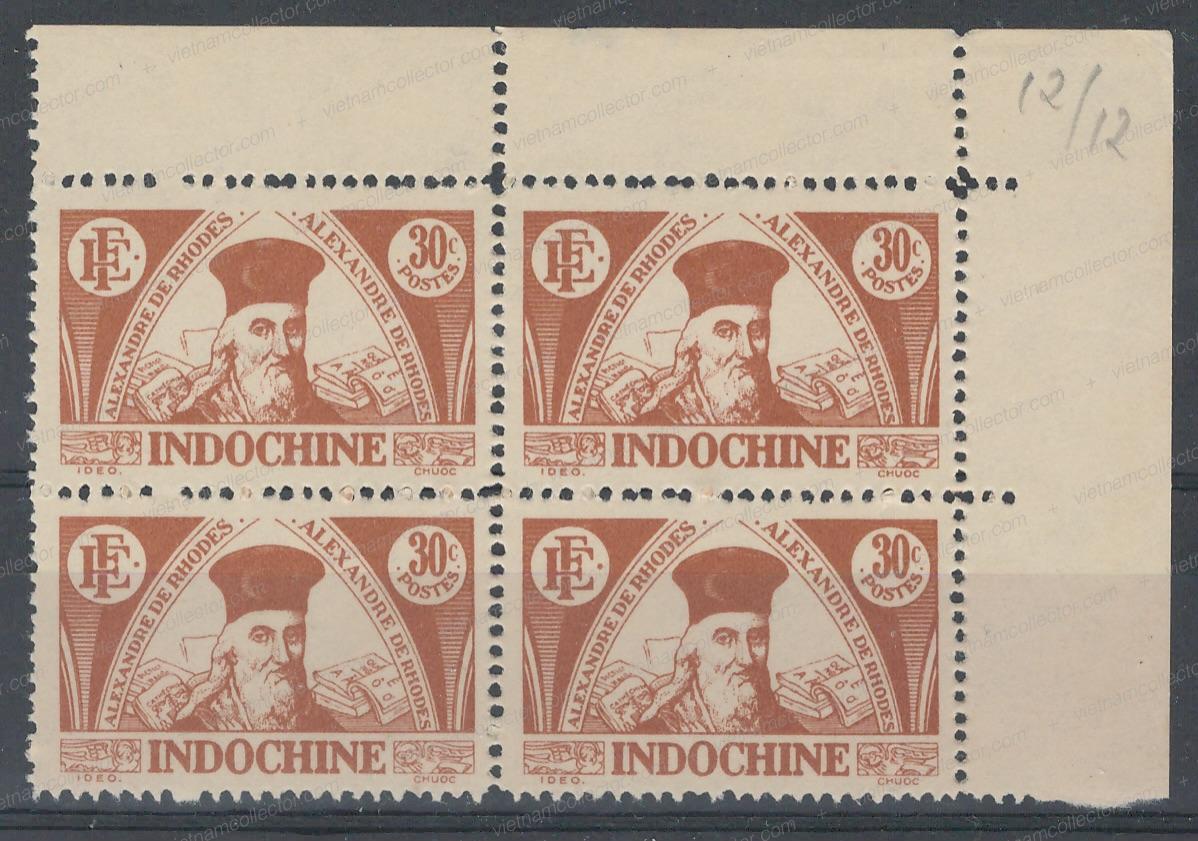
12.0:13.5 (very rare)
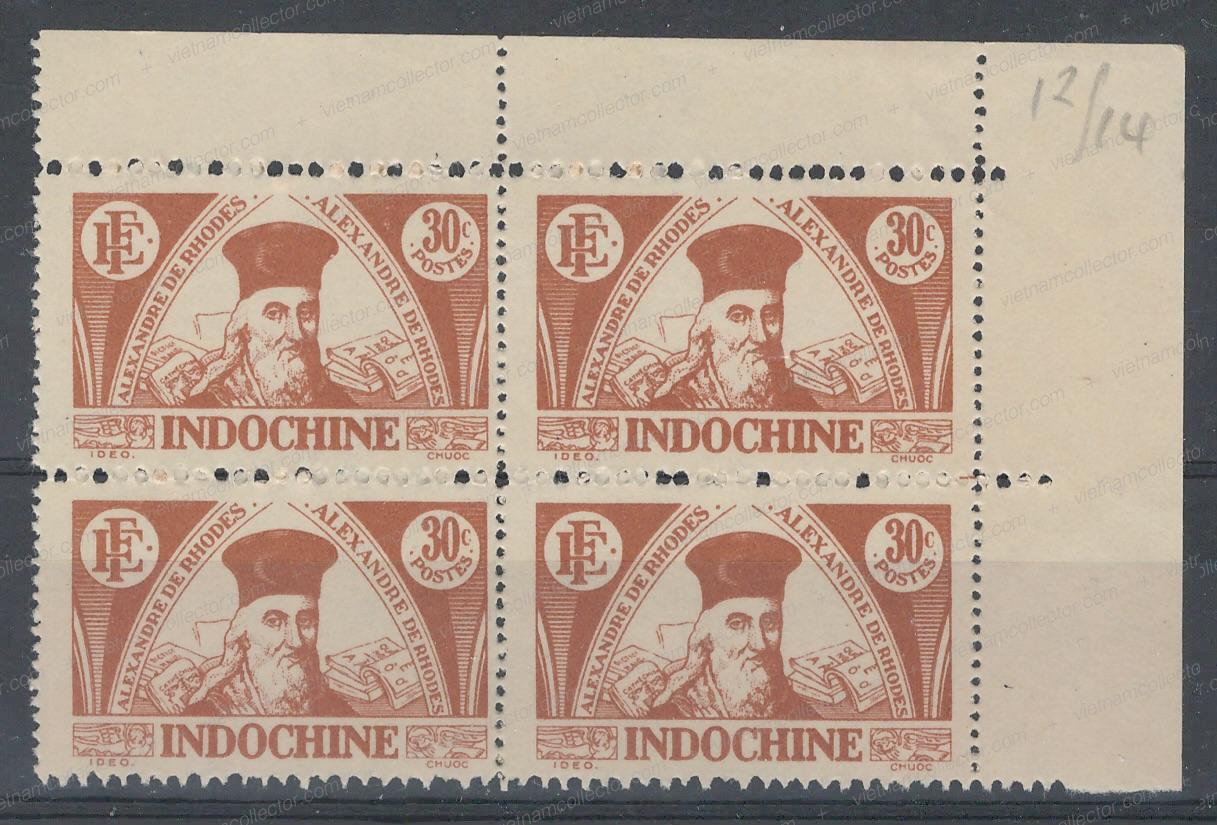
Large mint never hinged part of a sheet of the 30C orange-brown (35 stamps).
Here is the cancelled to order set in blocks of four.
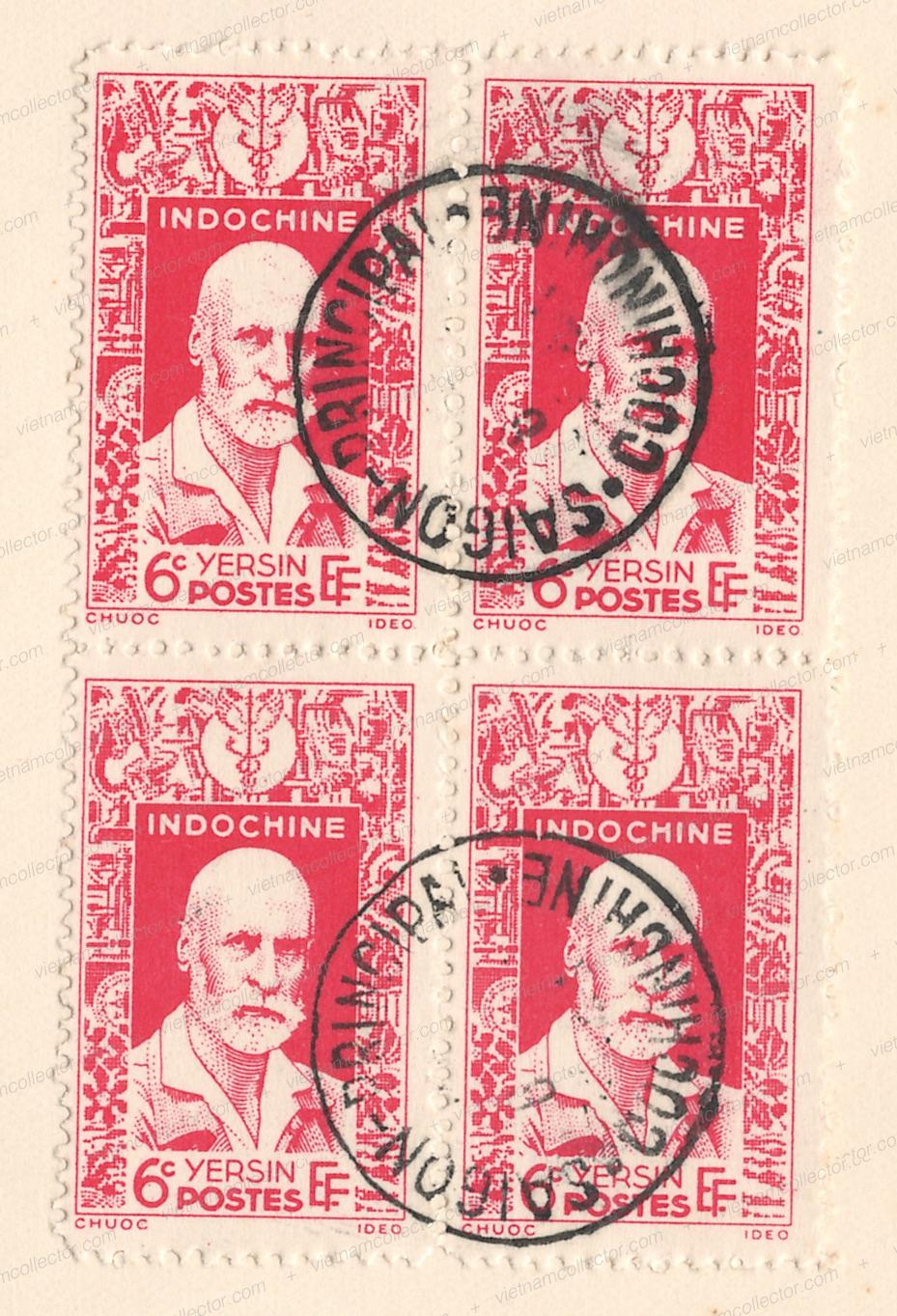
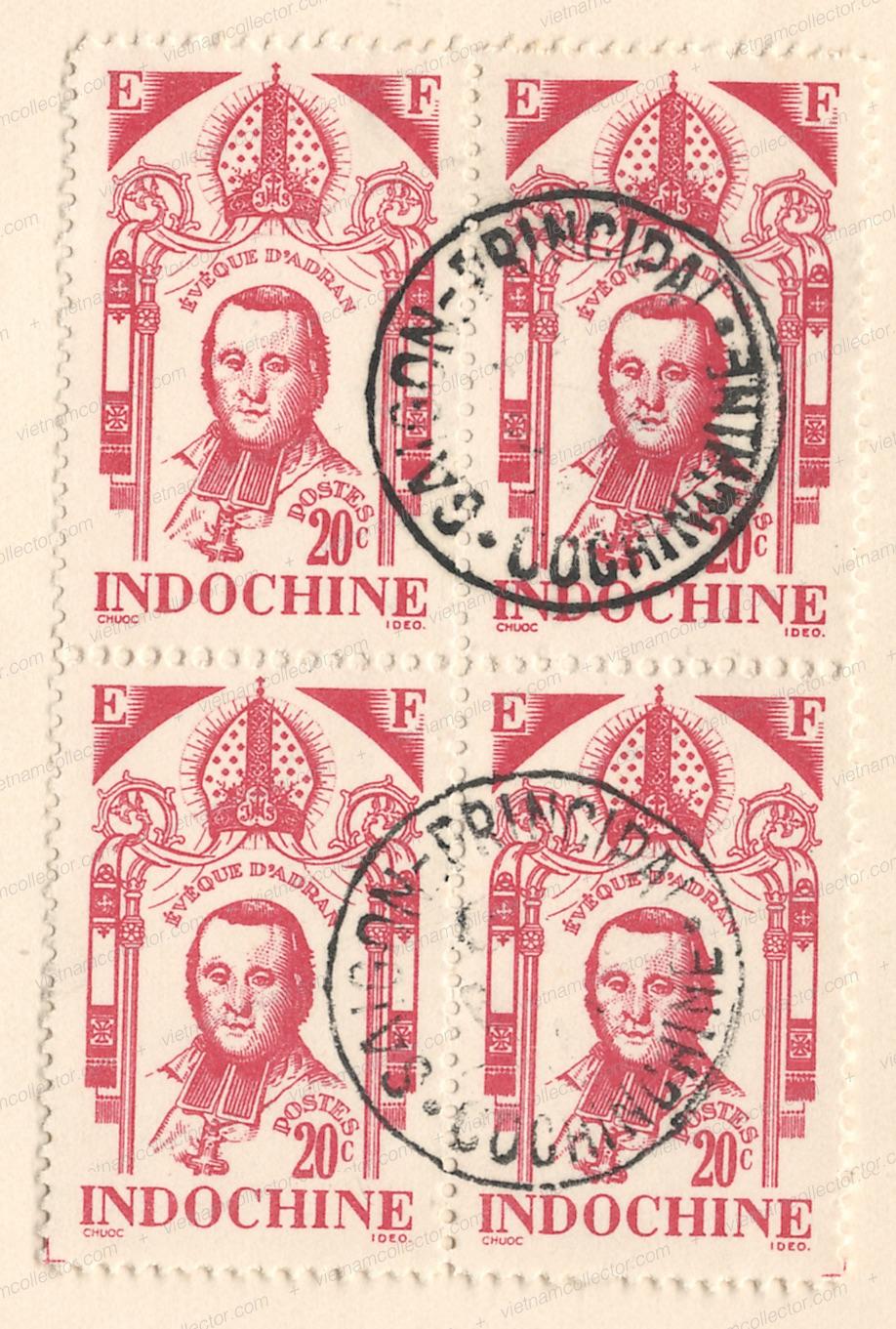
Yellow-Brown color
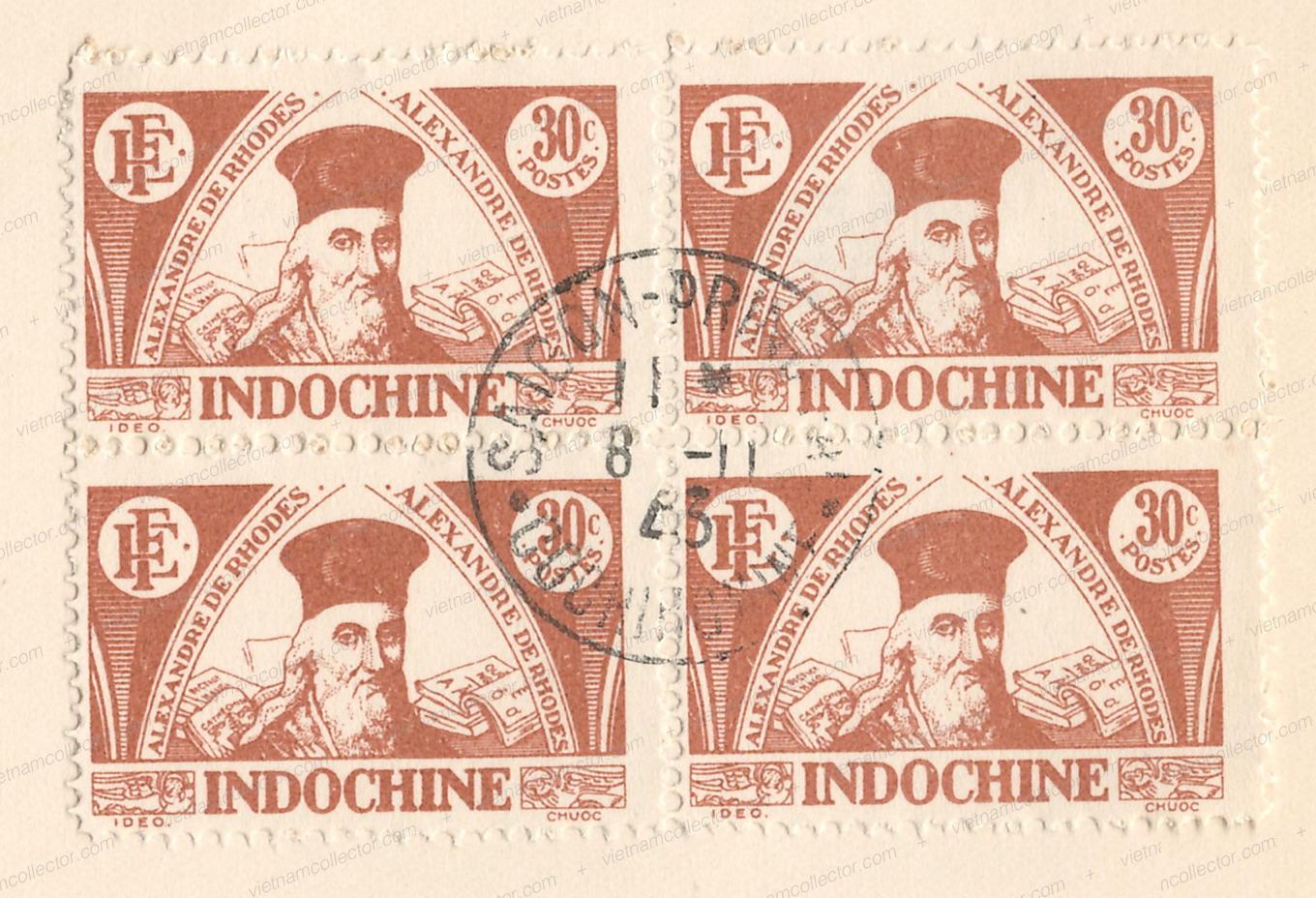
Postally used set.

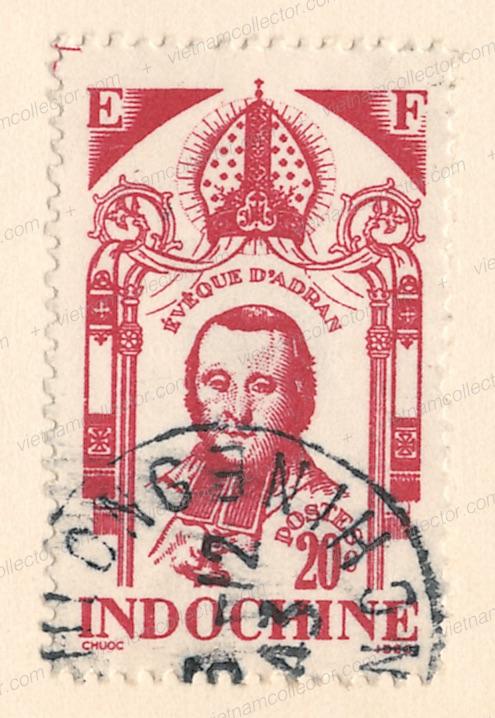
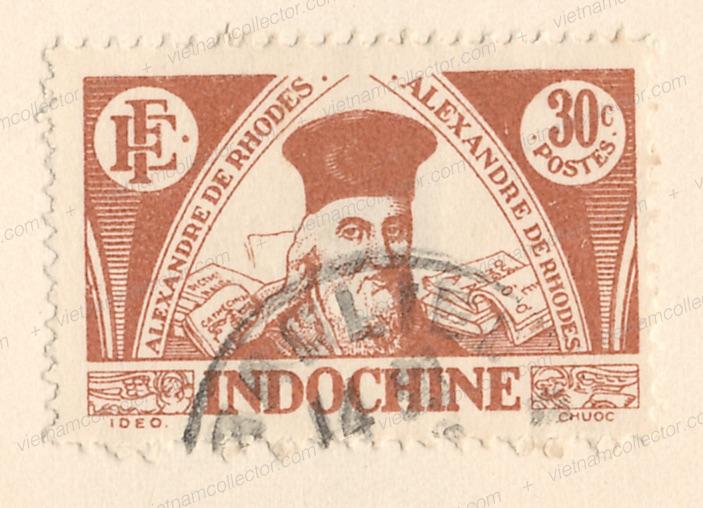
Set featuring First Day Cancels
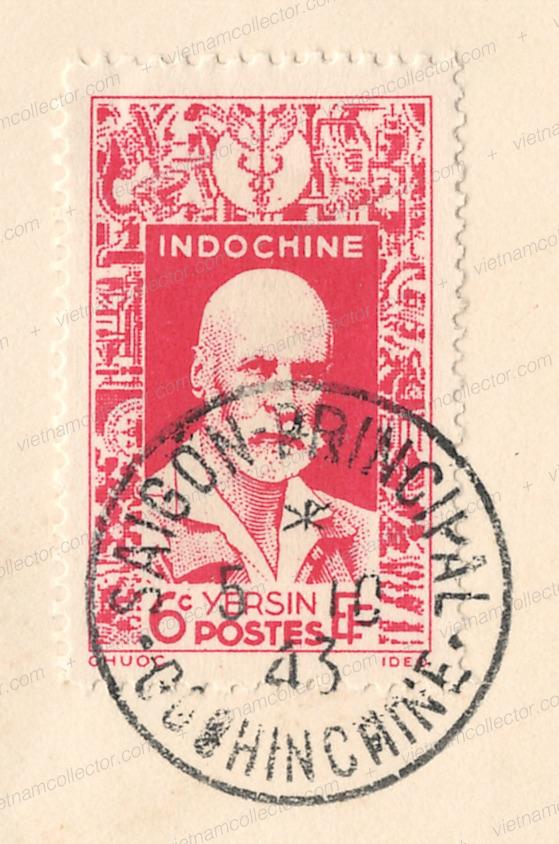
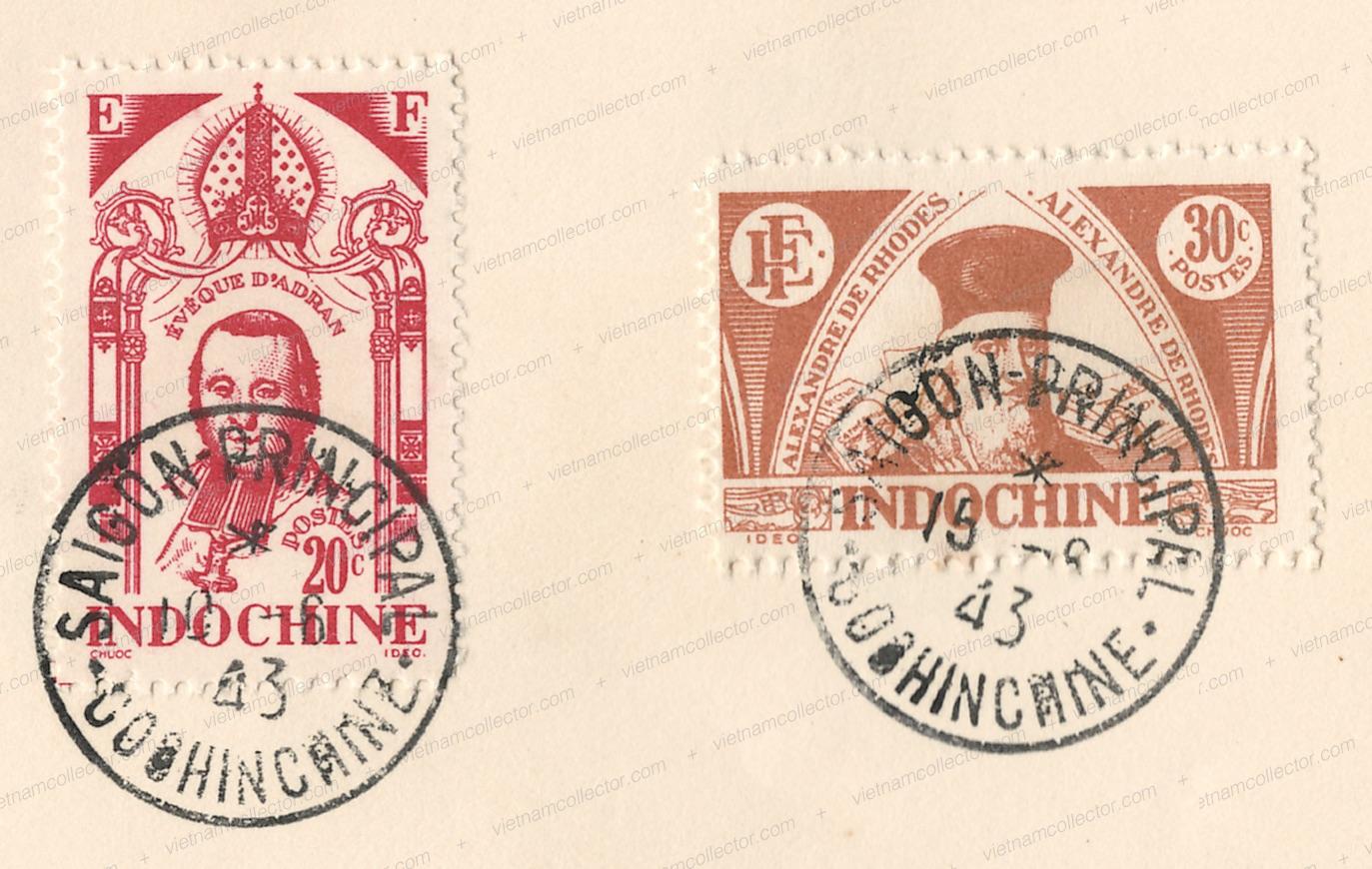
Single franking of the 6C stamp on a domestic letter sent from Tuyen Quang to Hanoi in November of 1943. The letter was censored by the Japanese Occupation Force as indicated by the “Hanoi Bis” circular cancel on the reverse. Additional Hanoi arrival cancels on the reverse. The letter was collect by the well known Jacques Dessrouseaux who held the position of “Chef des Mines” in Indochina. Ex Desrousseaux.

Mixed franking of the 40C de Lagree stamps (2) together with the 15C and 30C Rhodes stamps paying an overall postage of 1.25P on an international air mail letter sent through the military postal system to Metz in France. Cancelled with the “mute” Posted aux Armees T.O.E.” cancel from December 23rd, 1945. This is an early letter out of Indochina after World War II.
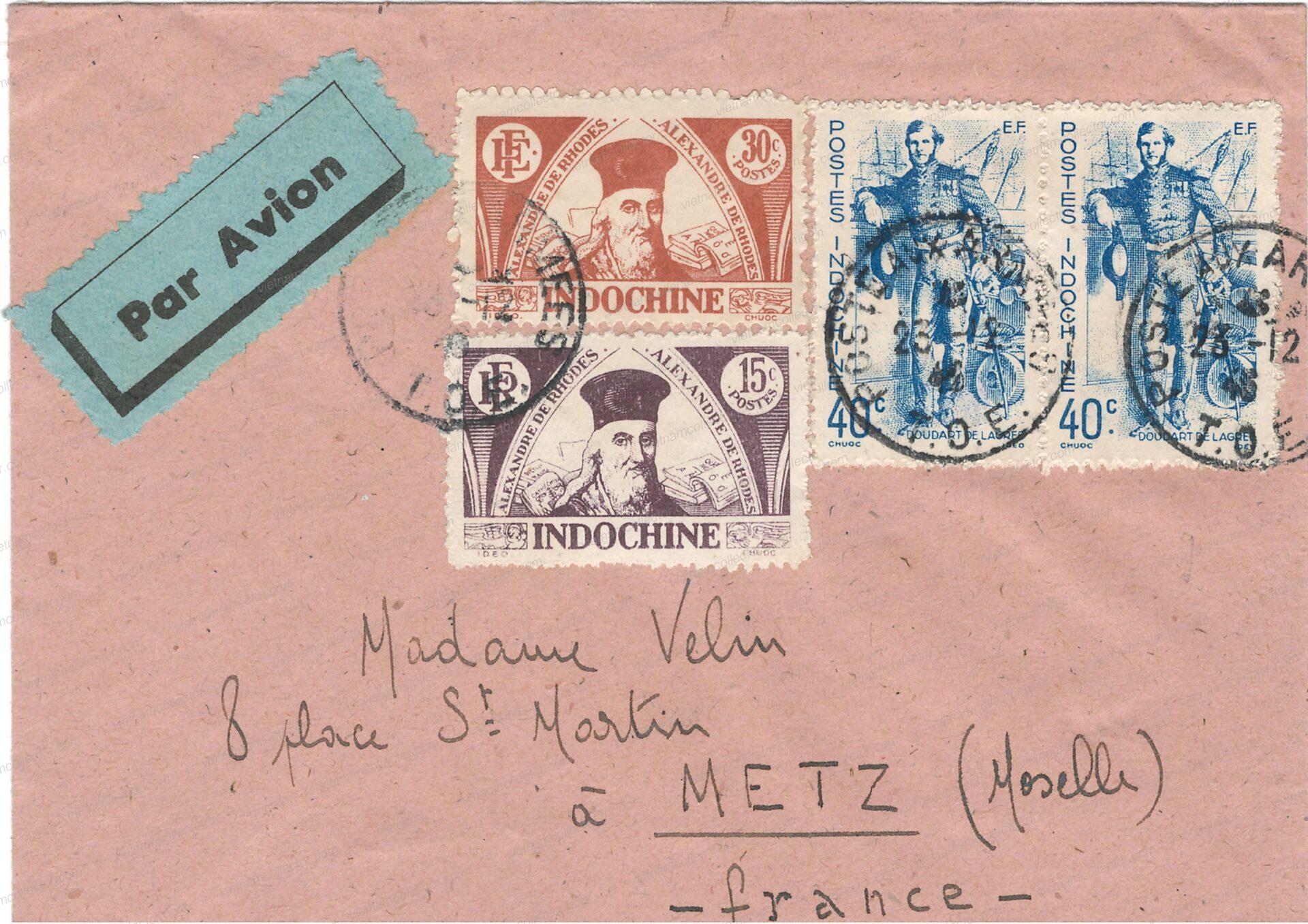
Mixed franking of the 10C Pavie stamp (8) together with the 20C Behaine stamp paying an overall postage of 1P on an international letter sent on August 18th, 1945 from Cholon to Guangdong Shunde, Daliang West Village in China that was just 3 days after the informal Japanese surrender in World War II. Guandong Province was still occupied by the Japanese so the letter was not censored. The editor cannot make any sense of the postage paid. The standard international letter rate amounted to 40C and any addition 20g in weight amounted 24C so it unclear how the sender arrived at a tariff of 1P. The 20C Behaine stamp was initially not cancelled so an additional Cholon cancel in a slightly different color was added later. Interesting. International letters during the Japanese occupation period are very rare and were mostly sent to Japan or countries occupied by the Japanese at the time.
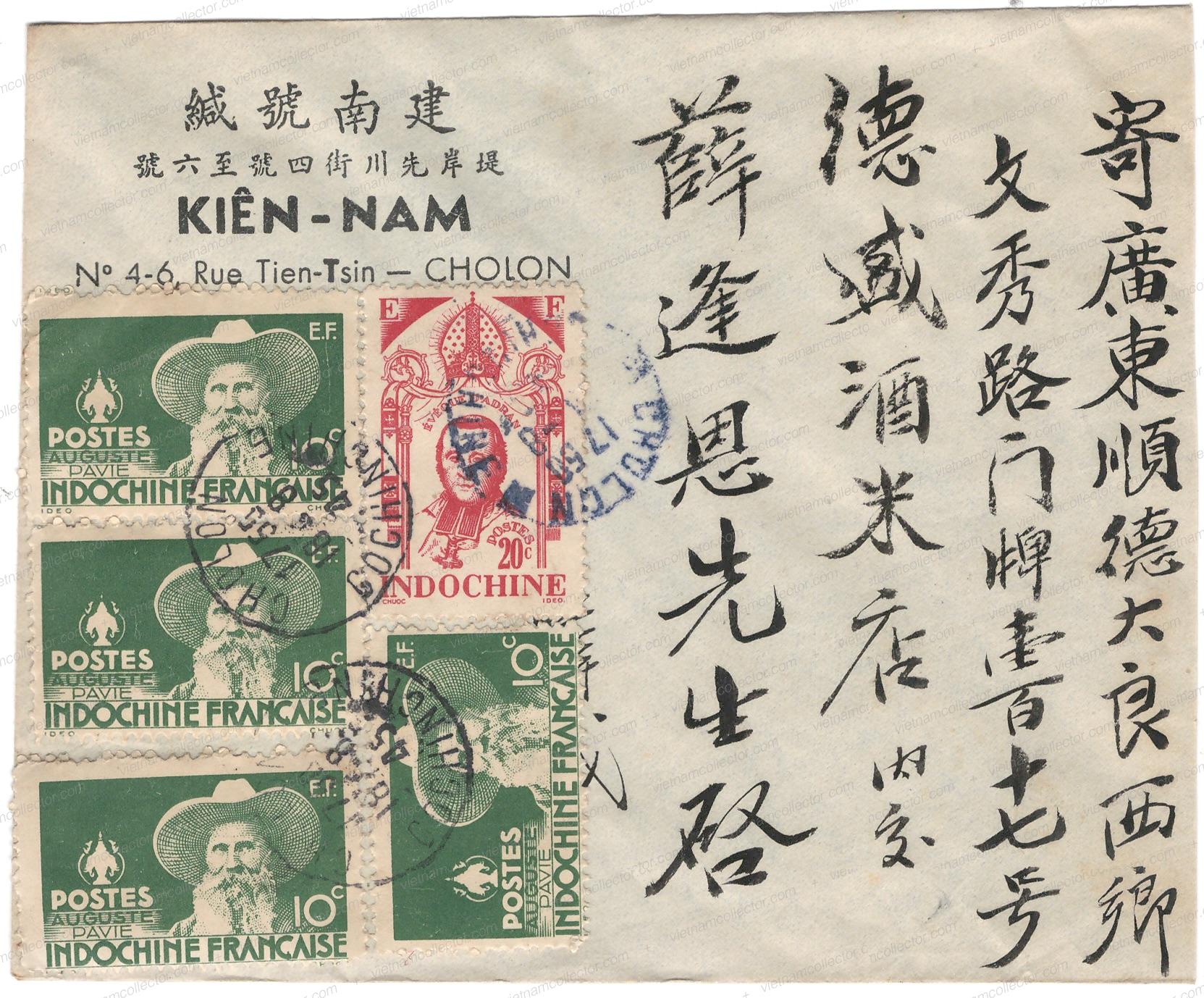
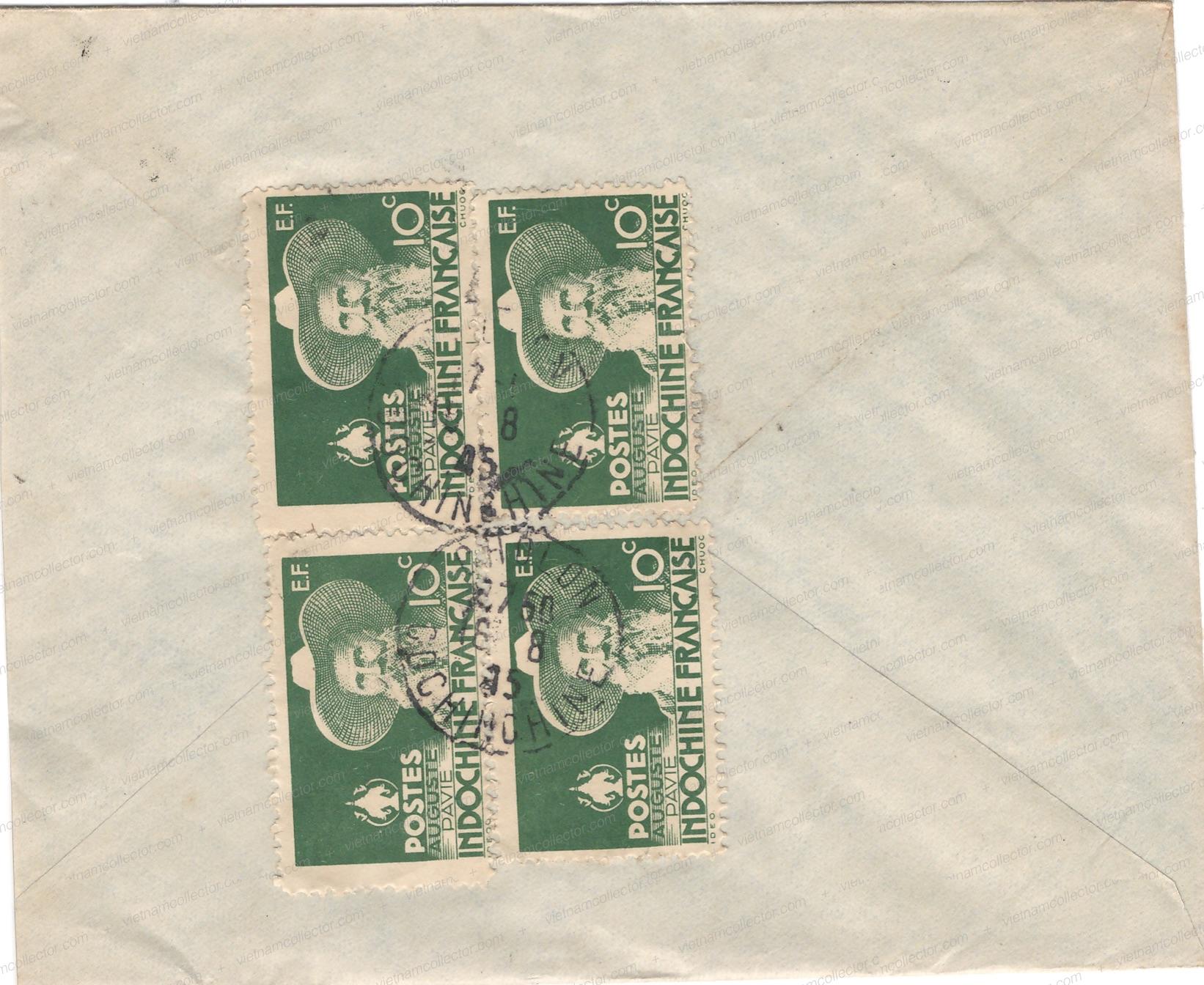
Registration Nr. 090420

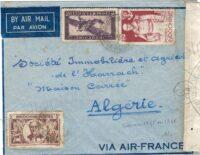

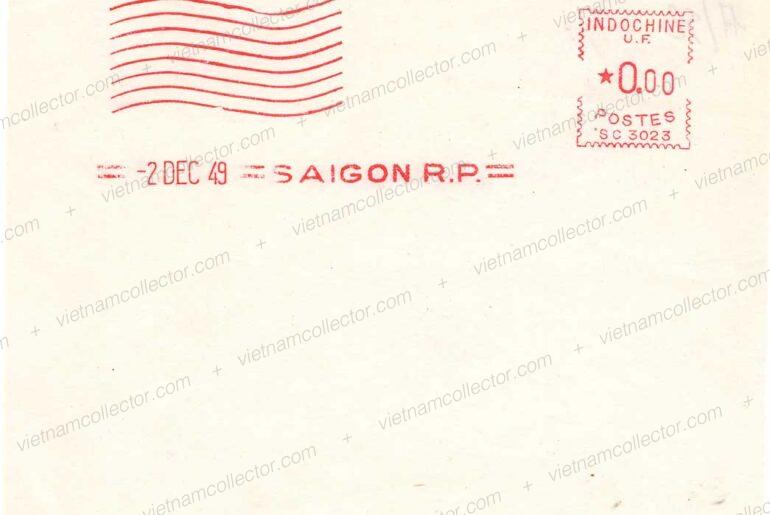
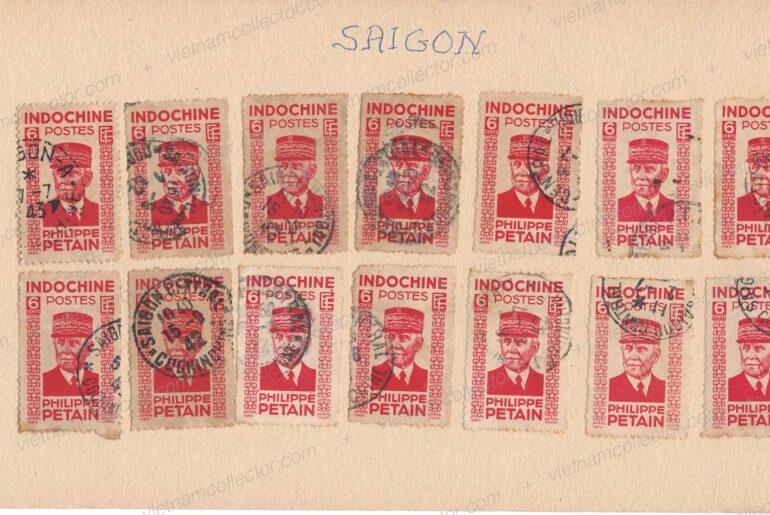
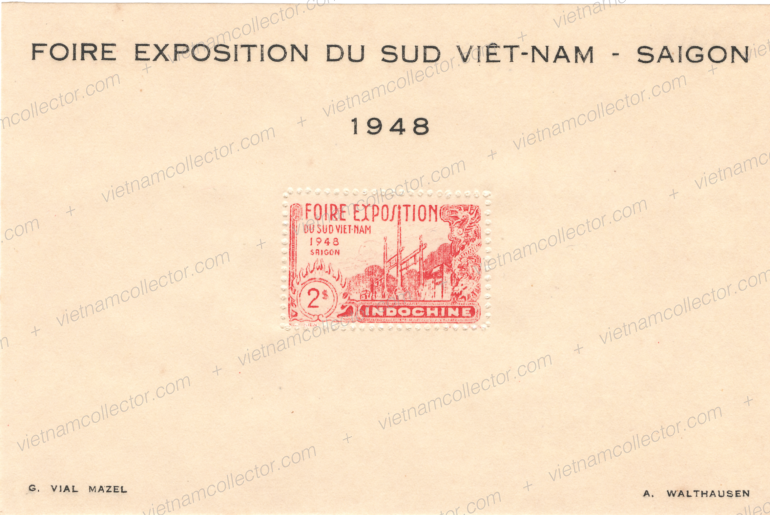
Comments are closed.